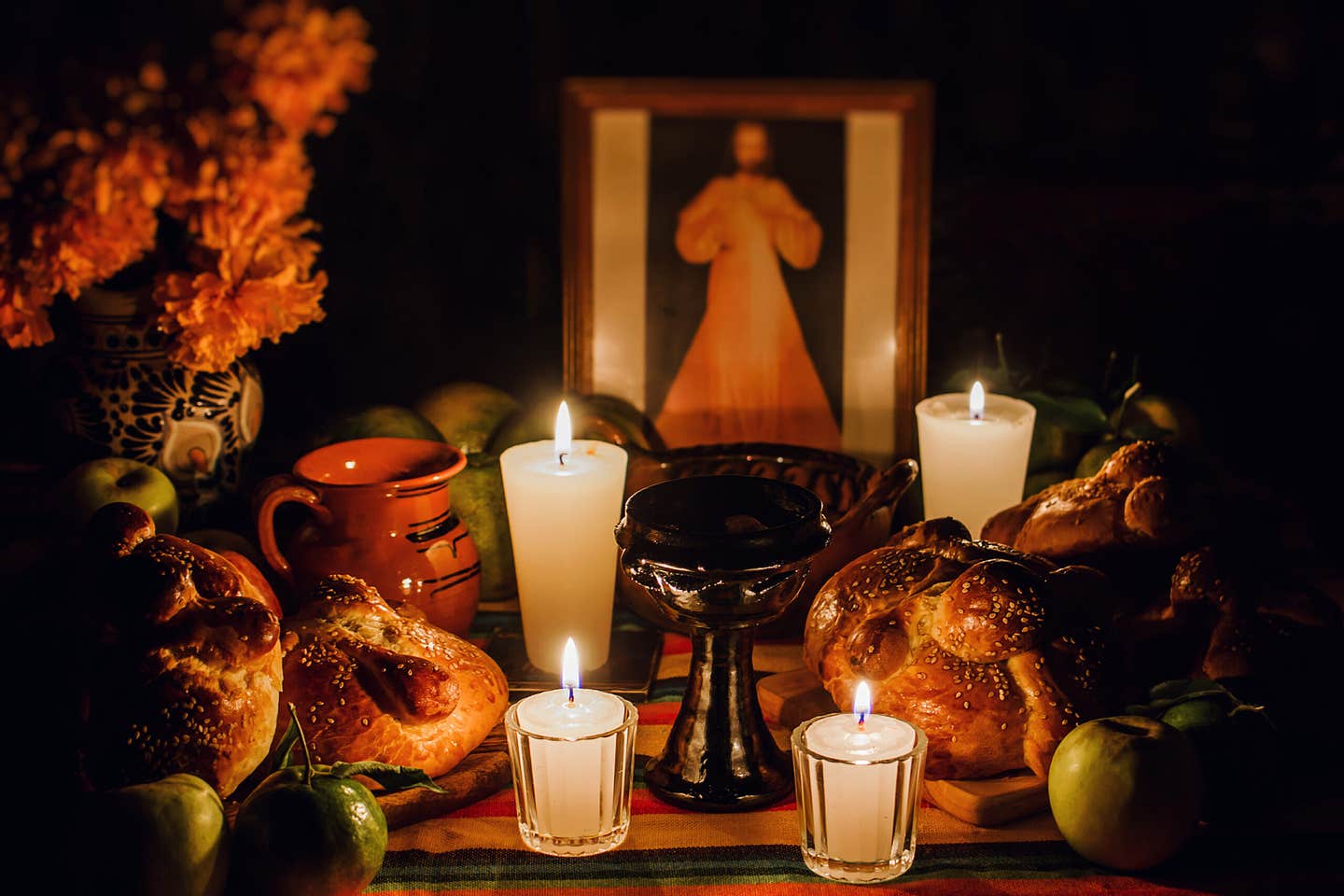
The Sweet Bread That Fuels San Antonio’s Día de los Muertos Celebrations
Sugar-dusted pan de muerto plays a central role in welcoming back the dead.
David Cáceres says he knows it may sound odd, but in some ways he feels closer to his late mother now than when she was alive. He and his brother José grew up selling her pan dulce on the streets of Mexico City, and now use her recipes to bake sweet buns and breads by the dozen at their San Antonio bakery La Panadería. Every day, they’re surrounded by her memory—and her presence is never more palpable than when Día de los Muertos, or Day of the Dead, rolls around.
“I can see her in every guest that comes to the bakery,” David says. Weeks before the holiday, the kitchen ramps up output of its signature pan de muerto, or bread of the dead, as families prepare to welcome back lost loved ones. During Día de los Muertos, observed in Mexico and throughout the diaspora on Nov. 1 and 2, it’s believed that the departed embark on a journey to visit the realm of the living. Sweet and fluffy pan de muerto—usually flavored with citrus zest and orange blossom water, decorated with bone-shaped patterns, and sometimes sprinkled with multi-hued sanding sugars—is served to pay homage to those who have passed.
With so many local Mexican bakeries embracing the spirit of the season, it’s hard not to come across pan de muerto in San Antonio this time of year. Bedoy’s Bakery has been churning out the loaves for more than 60 years, while Panifico Bake Shop bakes everything from cupcakes topped with calaveras (sugar skulls) to pan de muerto in the shape of human figures (representing the deceased). In the days leading up to the occasion, the breads appear at gravesites and in cemeteries across the city as families gather to pay their respects and sweep the tombs of the departed. People also bring pan de muerto home to grace ofrendas—temporary altars decked with photos and memorabilia of the dead, as well as items that nod to the four elements of water, fire, wind, and earth.
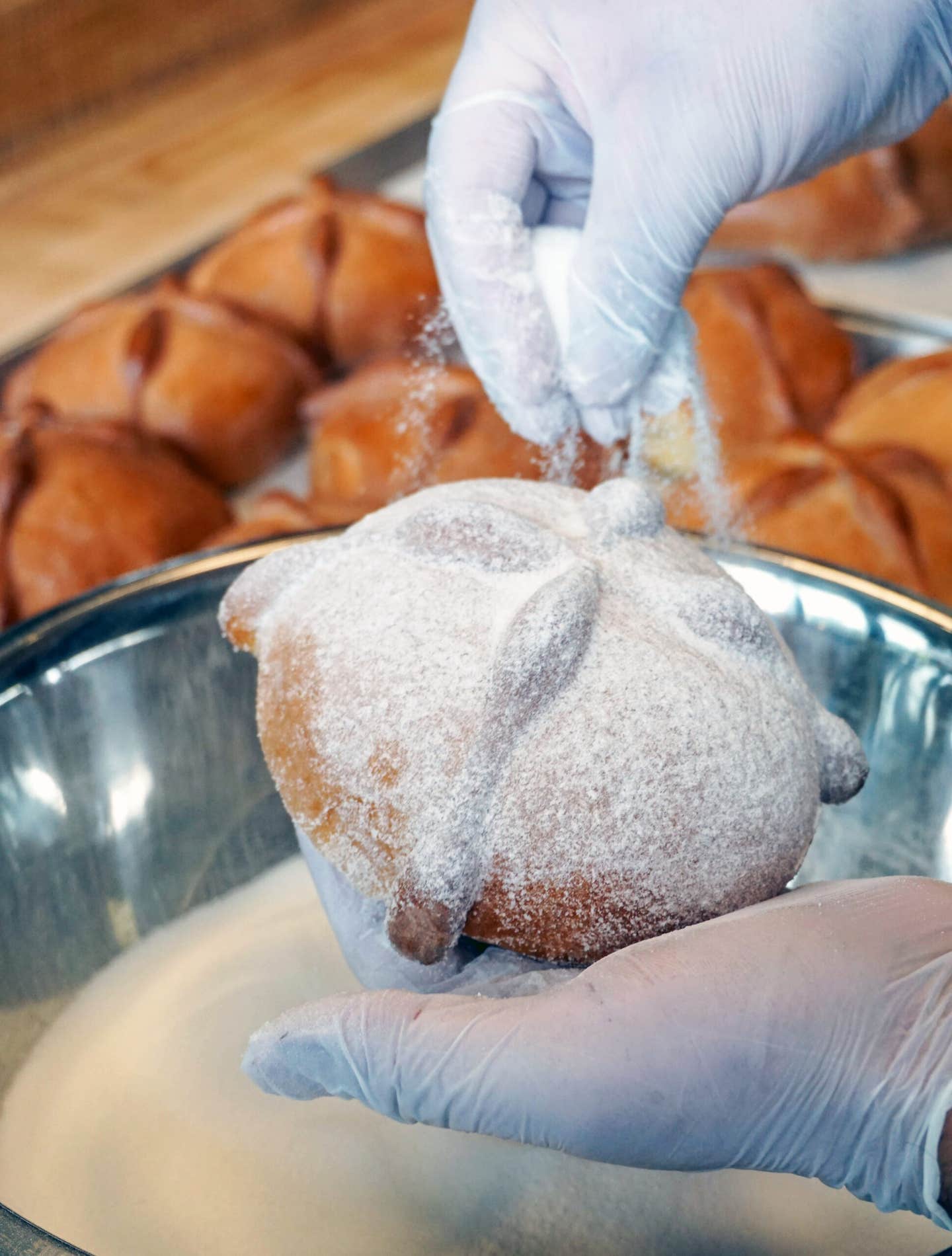
A glass of water placed on an ofrenda “serves to quench the spirit’s thirst after their long journey,” explains Pete Cortez, co-owner of San Antonio restaurant group La Familia Cortez. Candles represent fire, lighting the way for returning souls, he says, while intricate paper cutouts known as papel picado signify wind. Food, which often includes pan de muerto, denotes earth.
Each ofrenda includes personal touches, Cortez adds. “Altars are designed to capture the essence of those being honored, and to be familiar and inviting to the spirit of the deceased,” he says. For that reason, presented alongside the pan de muerto might be things the dead once loved to eat and drink. According to San Antonio-based chef and restaurant owner Johnny Hernandez, mole, enchiladas, tequila, and mezcal are some of the most common offerings he’s seen adorn ofrendas throughout his life. “And I’ve seen thousands,” he says.
After Spain conquered the Aztec empire in the 16th century, Indigenous peoples’ practice of memorializing the dead eventually intertwined with Catholic observances of All Saints’ Day and All Souls’ Day (observed on Nov. 1 and 2, respectively), explains Texas food historian Melissa Guerra. In 2008, UNESCO recognized the Day of the Dead as an Intangible Cultural Heritage of Humanity. Over time, the holiday has broadened into a secular festival, spreading beyond Mexico to cities across the globe.
Few places in the U.S. have woven Día de los Muertos into the fabric of their community as deeply as San Antonio, where many Mexicans have migrated over the centuries because of transnational ties. “San Antonio has never stopped being connected to Mexico,” notes Mexican American Civil Rights Institute executive director Sarah Zenaida Gould, adding that the Spanish founded the city “to create a settlement halfway between Mexico City and their northeastern-most settlement in Natchitoches.” After the local nonprofit Centro Cultural Aztlan launched an annual commemoration of Día de los Muertos in San Antonio nearly half a century ago, Gould explains, other organizations like the Guadalupe Cultural Arts Center and the Esperanza Peace and Justice Center began reclaiming and preserving the cultural traditions surrounding Día de los Muertos through events like public ofrenda installations and dance performances.
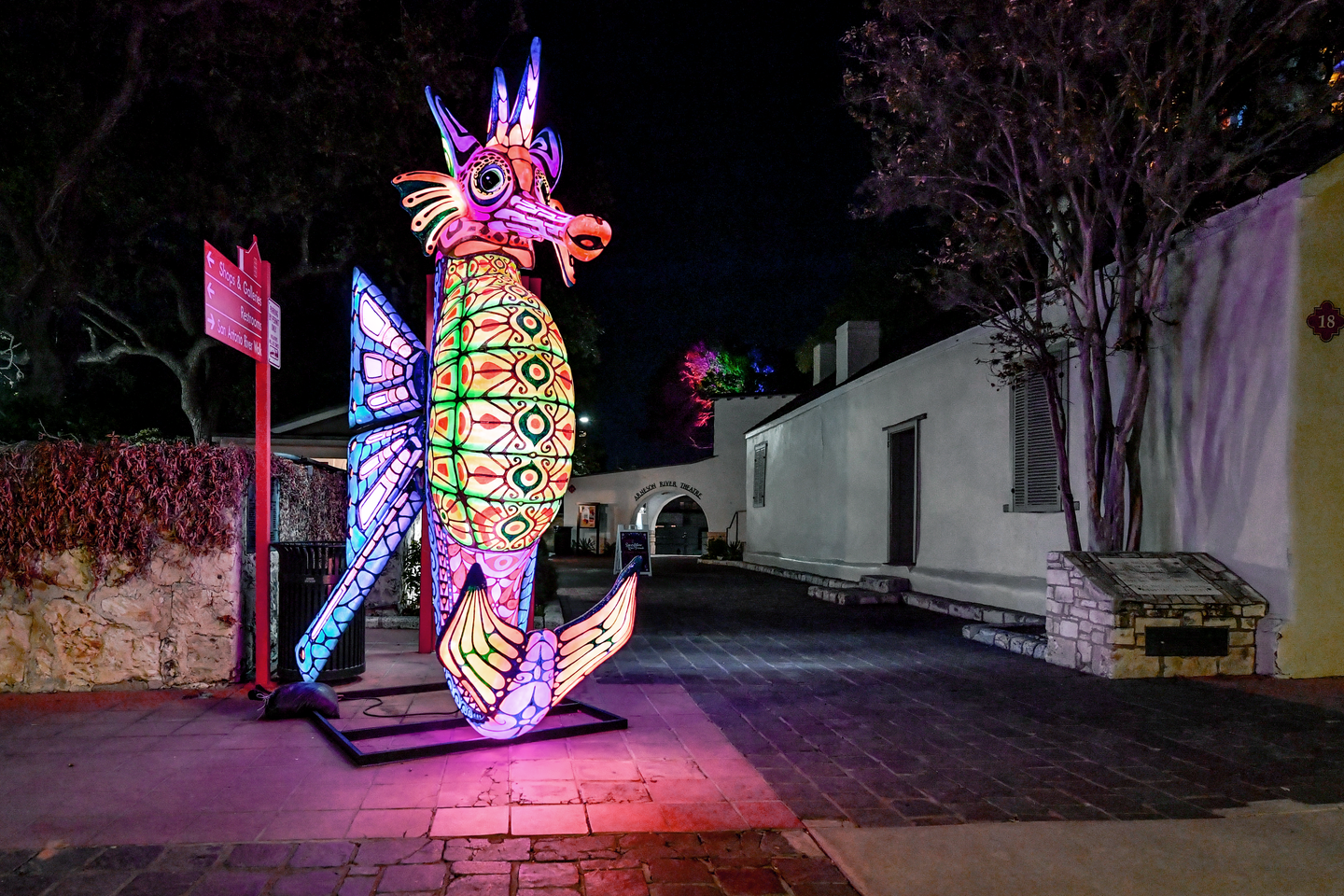
In recent years, the festivities have expanded into a carnivalesque celebration and, increasingly, a tourist draw. Gould attributes the holiday’s growing profile largely to the global awareness driven by Día de Los Muertos-inspired films like Coco and The Book of Life, as well as the James Bond flick Spectre, which opens with an elaborate Día de los Muertos parade in the Mexican capital. “Previously, there was no big parade in Mexico City like the one in Spectre,” Gould observes. “Now, there is.”
Hernandez has spearheaded many citywide events tied to the holiday in San Antonio, including one of the most anticipated—a lavish parade on the River Walk, where ornately decorated barges journey down the city’s famed waterways. Elsewhere, colorful alebrijes (Mexican folk art sculptures depicting fantastical creatures) light up the streets, while local artists install ofrendas in highly trafficked destinations like The Pearl, a dining and shopping complex. “People come from all over the United States to celebrate with us,” says David. “Every year, the celebrations have been getting bigger.”
The holiday may seem like a giant fiesta, says Gould, but the celebratory air is intertwined with reflection. “It's very Mexican to be both festive and contemplative at the same time,” she notes. “Death is absolutely a very difficult part of life, but also our loved ones never really leave us. Even in death, we are always connected.” The acts of embellishing ofrendas and cooking celebratory dishes, Cortez adds, allow the living “to maintain a connection to their departed loved ones and keep their memory alive in their hearts.”
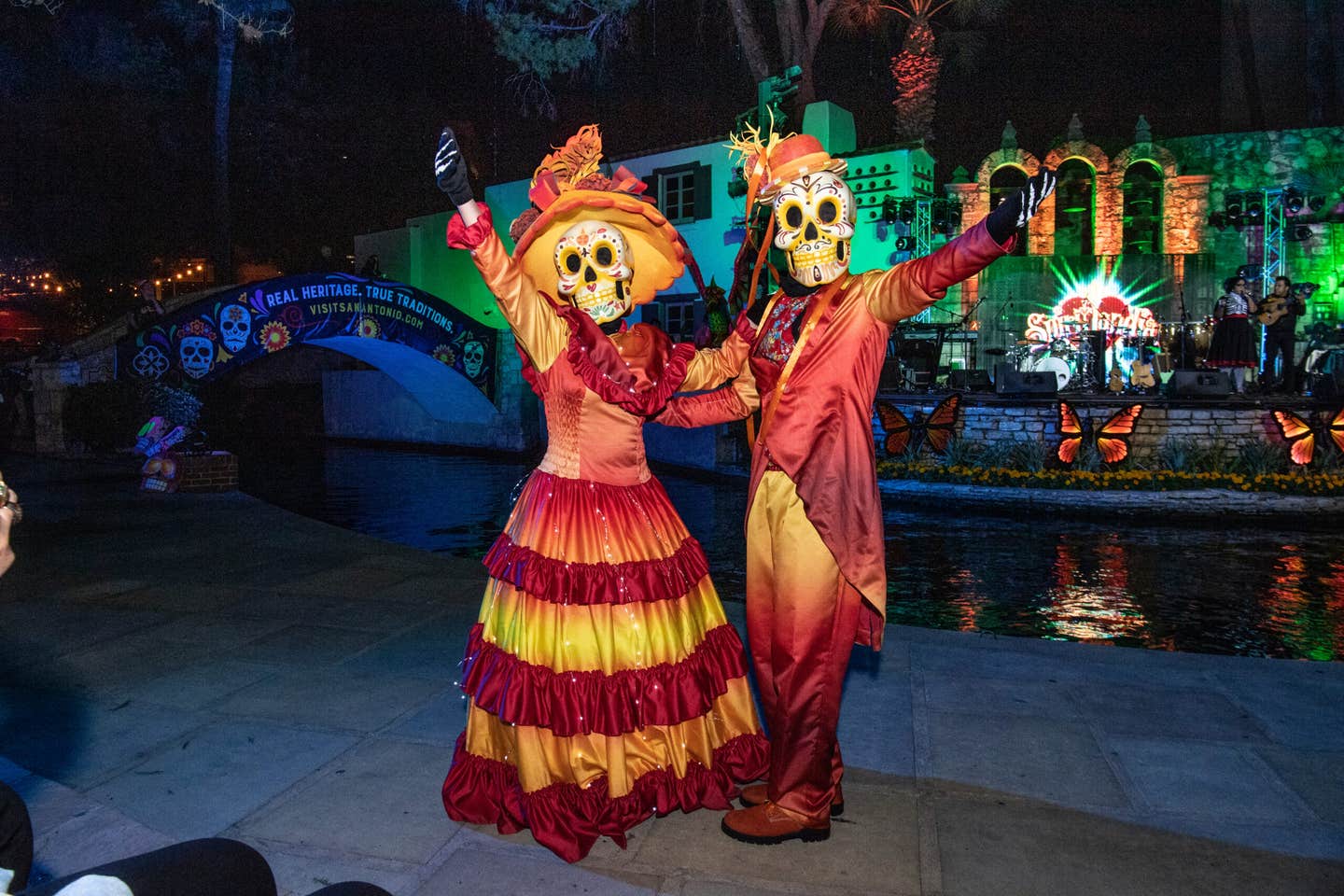
It’s evident in the holiday’s whimsical motifs and vibrant-hued décor that it doesn’t bill itself as a mourning of death, but rather an affirmation of life. “Bright colors, flowers, and silly skeletons can nudge our hearts away from grief,” says Guerra. This joyful approach to the inevitable, David points out, is a significant part of why he thinks the holiday is finding growing appeal outside the Mexican population. “It’s the kind of celebration that made me realize how much I loved my mom, and how much she meant to us,” he says. If the way Día de los Muertos festivities in San Antonio have expanded beyond the Mexican community is any indication, the desire to feel close to lost loved ones is “something universal,” David adds.
Once the Día de los Muertos revelry finally winds down, you might assume that the Cáceres brothers would be exhausted. Rather, David insists that every year he feels replenished by the act of sharing his mother’s baking legacy with the people of San Antonio, and will never tire of making her symbolic breads.
“No matter what,” he says, “I’m going to die baking.”
Recipe
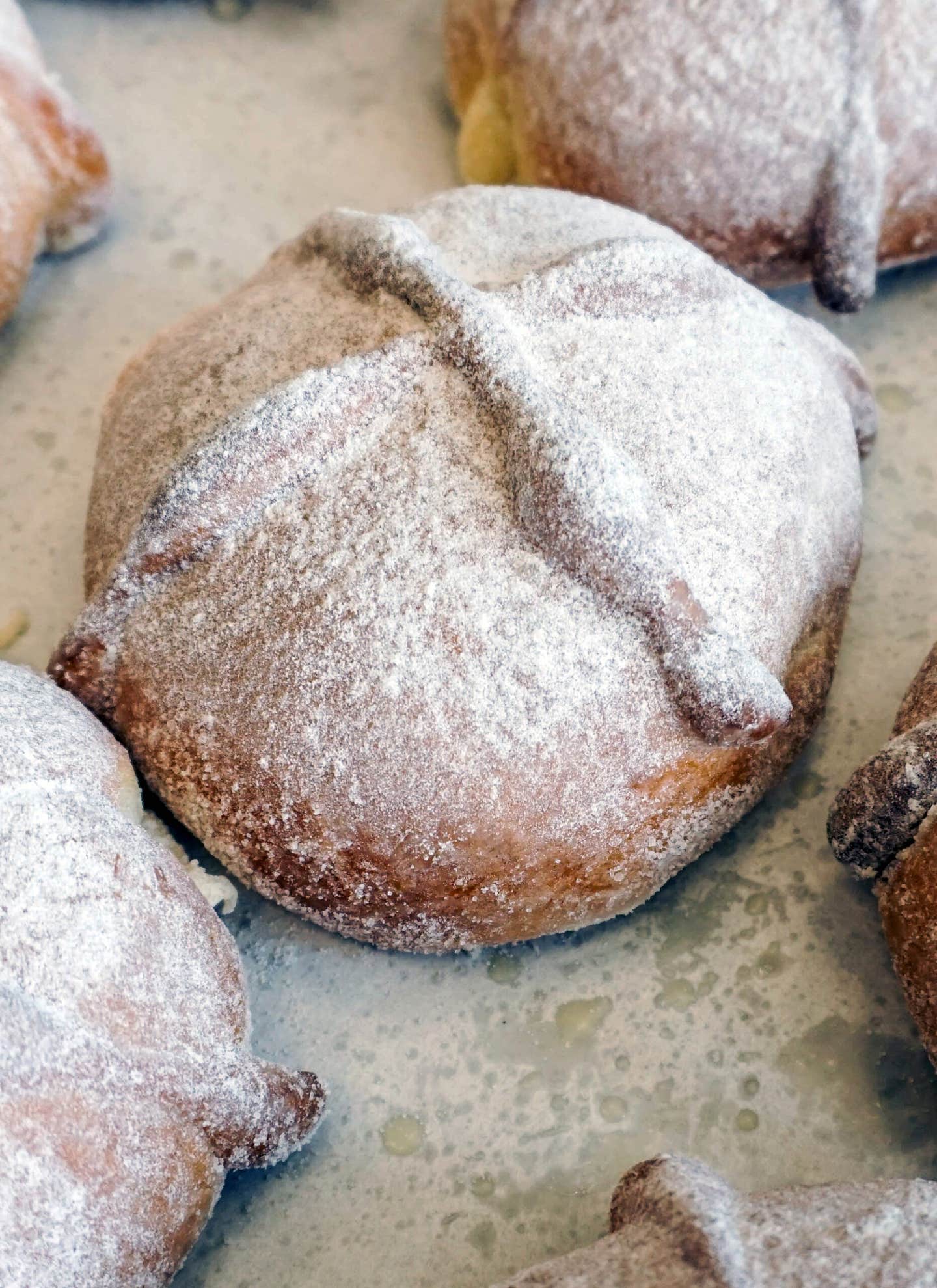
Keep Reading
Continue to Next Story










